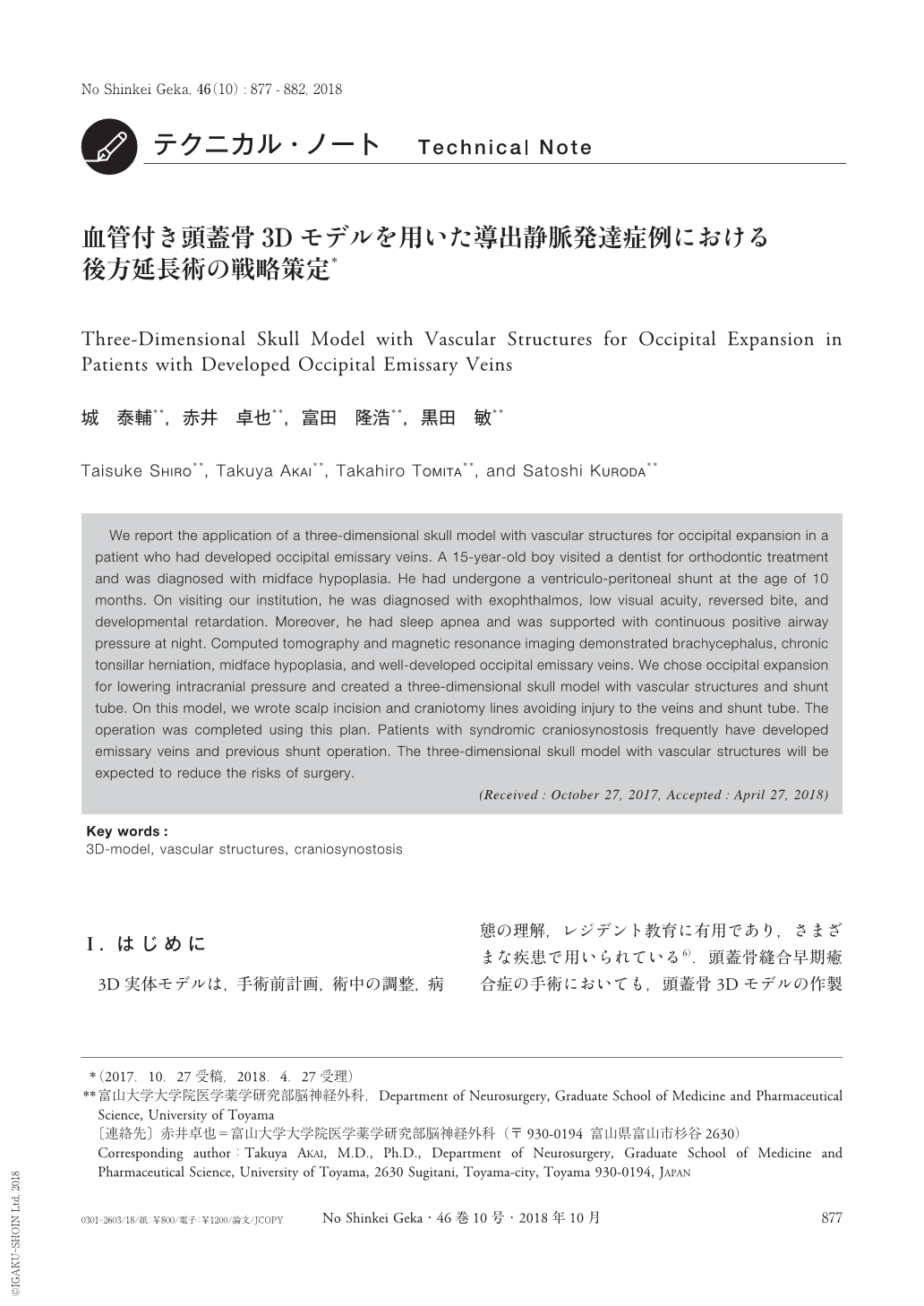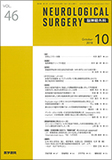Japanese
English
- 有料閲覧
- Abstract 文献概要
- 1ページ目 Look Inside
- 参考文献 Reference
Ⅰ.はじめに
3D実体モデルは,手術前計画,術中の調整,病態の理解,レジデント教育に有用であり,さまざまな疾患で用いられている6).頭蓋骨縫合早期癒合症の手術においても,頭蓋骨3Dモデルの作製の利点として,術者間で手術イメージを共有できる,手術時間の短縮,術中出血量の減少につながるなどが指摘されており4,7,11,13),われわれも術前に作製することが多い.従来法による頭蓋形成術においては,骨切り線の設定,骨の彎曲形成,骨の移動方向と距離および骨固定部位の決定に有用である.骨延長法においては,骨切り線,骨延長器の設置位置と延長方向,その距離の決定に有用である.近年,頭蓋内圧亢進を伴うことが多い症候群性頭蓋骨縫合早期癒合症では,まず,より大きな頭蓋内容積拡大が得られる後方延長術を行うことが提唱されている3,8,15).しかし,静脈灌流路の狭窄・閉塞に伴い,後頭部で側副静脈路として導出静脈が異常発達していることがあり,注意を要する10).今回,後頭導出静脈が発達したCrouzon症候群の症例の手術戦略決定に際して,血管付き頭蓋骨3Dモデルを作製し,有用であったので報告する.
We report the application of a three-dimensional skull model with vascular structures for occipital expansion in a patient who had developed occipital emissary veins. A 15-year-old boy visited a dentist for orthodontic treatment and was diagnosed with midface hypoplasia. He had undergone a ventriculo-peritoneal shunt at the age of 10 months. On visiting our institution, he was diagnosed with exophthalmos, low visual acuity, reversed bite, and developmental retardation. Moreover, he had sleep apnea and was supported with continuous positive airway pressure at night. Computed tomography and magnetic resonance imaging demonstrated brachycephalus, chronic tonsillar herniation, midface hypoplasia, and well-developed occipital emissary veins. We chose occipital expansion for lowering intracranial pressure and created a three-dimensional skull model with vascular structures and shunt tube. On this model, we wrote scalp incision and craniotomy lines avoiding injury to the veins and shunt tube. The operation was completed using this plan. Patients with syndromic craniosynostosis frequently have developed emissary veins and previous shunt operation. The three-dimensional skull model with vascular structures will be expected to reduce the risks of surgery.

Copyright © 2018, Igaku-Shoin Ltd. All rights reserved.


